Do you have amazing built-in bookcases but are now stuck on what to do with them? How about a great piece of furniture with shelving? Or there was that empty wall that was perfect for floating shelves but now it looks awkward because you don’t know what to put on them?
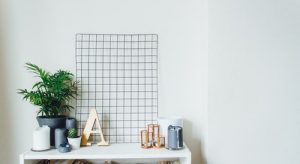 Shelves in a home are a great way to tell stories and showcase collections or favorite things. They are also ideal for storage if you approach them in the right way. If you use your shelves as a place to add personality & color, it becomes the final puzzle piece to finishing a room that reflects you.
Shelves in a home are a great way to tell stories and showcase collections or favorite things. They are also ideal for storage if you approach them in the right way. If you use your shelves as a place to add personality & color, it becomes the final puzzle piece to finishing a room that reflects you.
Of course we know all shelves are different, but in general, achieving that beautifully layered yet balanced look is easier than you think with a few helpful hints. Our strategy works whether you’ve got a single floating shelf or a whole wall of built-ins.
Insights:
- Keep balance in mind between form and function as well as size and the shape of objects.
- As you add pieces, take a moment to consider the shelves as a whole. One spot might need more color, or maybe a rounder shape—there’s no right or wrong arrangement, so go with what’s pleasing to your eye.
- Consider overlapping some objects and place some at a slight angle. The result will be a more casual look. Or consider using a collection of items that are the same or slightly different and aligning them all to create a curated look that will look a bit more planned and formal.
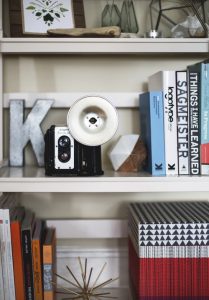 Books are one of my favorite things to style with — use them in interesting arrangements, colors or as pedestals to add height to other objects. But no paperbacks!! You want coffee table type books or others with the paper cover removed to elevate the look of those Nicholas Sparks romances.
Books are one of my favorite things to style with — use them in interesting arrangements, colors or as pedestals to add height to other objects. But no paperbacks!! You want coffee table type books or others with the paper cover removed to elevate the look of those Nicholas Sparks romances.
- While books are great, also think beyond books as shelves are great storage for glassware, barware or collections etc..
- Keep the empty spaces in shelves free of clutter — no mail, receipts, or magazines.
- Restyling shelves doesn’t require buying anything, as you can reuse what you have and just rearrange where things are placed.
- Overloading the cabinet with too many objects can come off as clutter making it not aesthetically pleasing, its okay to keep things simple with space around objects.
- Consider adding leaning art pieces on shelves or hanging art at the back of a bookcase. It’s a nice way to add color and give a different dimension to they typical shelf.
- If you are using your shelving for storage of things that may not be view-worthy, incorporate baskets or boxes to keep things hidden. Or if you have more space than you have objects, I’ve also used beautiful boxes/containers to help fill the space a bit.
Step by Step Guide:
- Take everything off the shelves and edit out things that you don’t like or need anymore. Focus on pieces that are functional, sentimental or beautiful. This allows you to see all your items to understand their best placement.
- Start with something tall – give your shelf vignette some height by adding a vase, object or art. Adding the tallest object first helps establish the scale of your finished vignettes; it also ensures that your bookshelves will feel finished.
- Add structure to each shelf – start by choosing just one impactful object per shelf that will serve as the anchor of each shelf vignette. A large sculptural object, a decorative box or tray, even a potted plant—almost anything goes, as long as it’s visually weighty enough to serve as a focal point.
- Add books – no bookshelf is complete without them, after all. Although, look for books with decorative spines or covers with great pattern or color. You can even group books by color for an extra-polished look, coordinate them with the objects you’ll be adding to the shelves or show the pages face forward to achieve an unexpected monochromatic look. Books also help keep shelves deliberate and tidy as well as a way to give short, wide items some elevation.
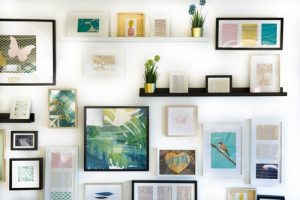 Add art – setting a few picture frames on an open shelf is a way of displaying photos that you aren’t sure what to do with and draws the eye to the back of the shelf creating a sense of layering and it can take up ample amount of space in what is otherwise hard to fill with smaller objects.
Add art – setting a few picture frames on an open shelf is a way of displaying photos that you aren’t sure what to do with and draws the eye to the back of the shelf creating a sense of layering and it can take up ample amount of space in what is otherwise hard to fill with smaller objects.
- Fill out the space – to complete your shelves, look to smaller objects and mementos that are easy to refresh with the seasons. By grouping similar products together you can discover unexpected pairings of items.
- Mix it up – for objects, sculptures, vessels, collections and even lighting make sure you have a combination of textures, sizes, styles and tones but stay within that color palette so it has a cohesive look. However, don’t be afraid to mix it up with an eclectic blend of objects or an unexpected pop of interesting color.
- Go vertical and horizontal – mix your items so that there is a combination of items laying flat, horizontally, stacking some upright, or vertical. This allows for the shelf to have some interest and design and seems to flow better.


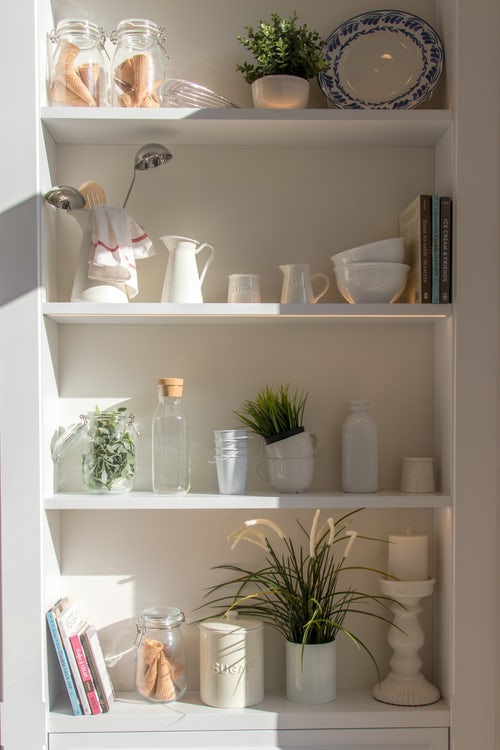

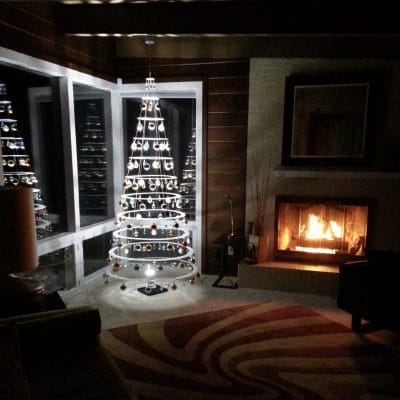
1 Comment
Jamie
Something I always struggle with! Thanks for the tips.
Comments are closed.